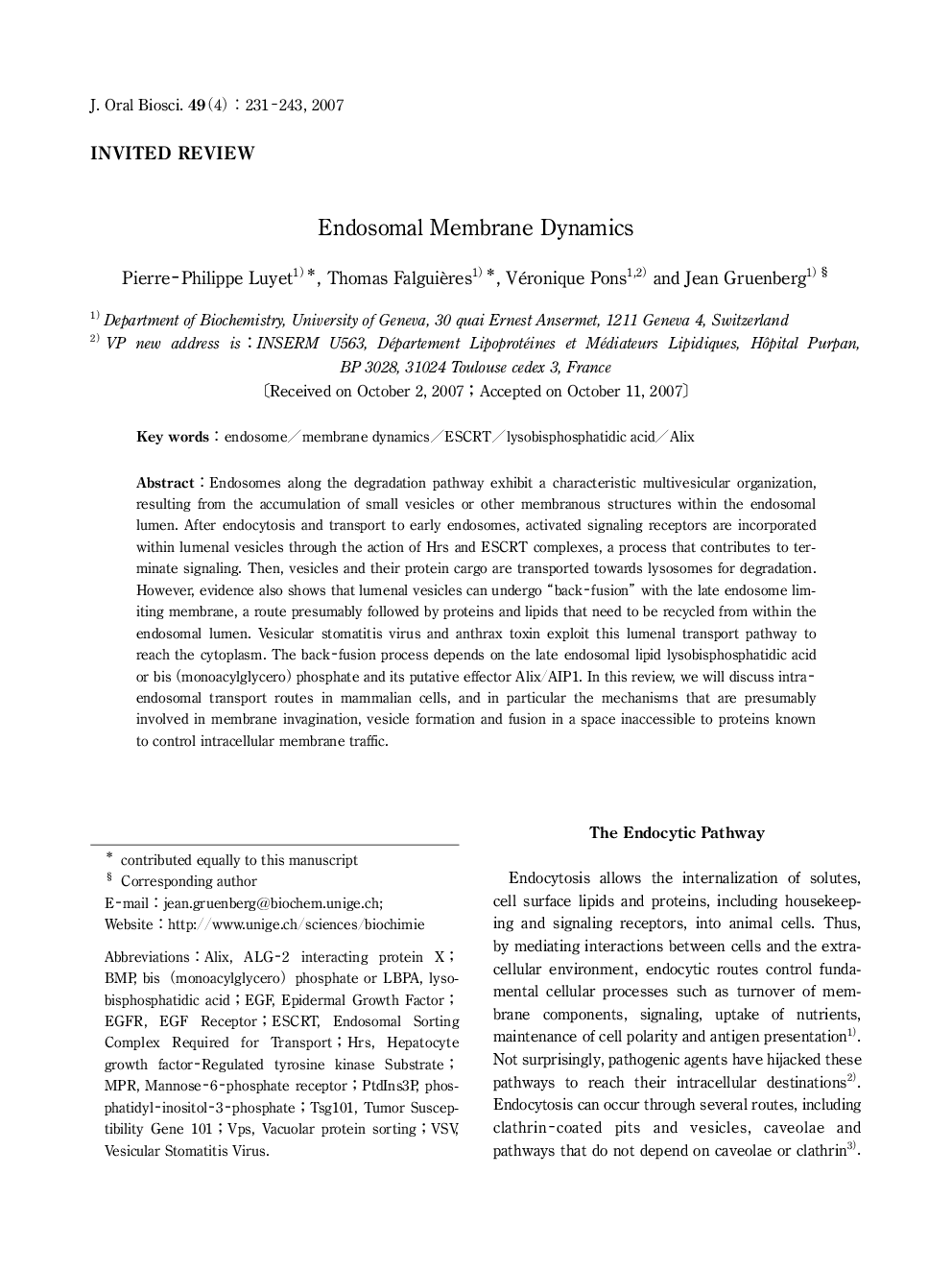| Article ID | Journal | Published Year | Pages | File Type |
|---|---|---|---|---|
| 2777076 | Journal of Oral Biosciences | 2007 | 13 Pages |
Endosomes along the degradation pathway exhibit a characteristic multivesicular organization, resulting from the accumulation of small vesicles or other membranous structures within the endosomal lumen. After endocytosis and transport to early endosomes, activated signaling receptors are incorporated within lumenal vesicles through the action of Hrs and ESCRT complexes, a process that contributes to terminate signaling. Then, vesicles and their protein cargo are transported towards lysosomes for degradation. However, evidence also shows that lumenal vesicles can undergo “back-fusion” with the late endosome limiting membrane, a route presumably followed by proteins and lipids that need to be recycled from within the endosomal lumen. Vesicular stomatitis virus and anthrax toxin exploit this lumenal transport pathway to reach the cytoplasm. The back-fusion process depends on the late endosomal lipid lysobisphosphatidic acid or bis (monoacylglycero) phosphate and its putative effector Alix/AIP1. In this review, we will discuss intra-endosomal transport routes in mammalian cells, and in particular the mechanisms that are presumably involved in membrane invagination, vesicle formation and fusion in a space inaccessible to proteins known to control intracellular membrane traffic.
